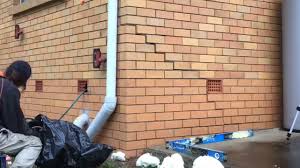Understanding Melbourne’s soil is crucial when building sturdy structures. Without the right groundwork, houses can settle in ways that are less than ideal. In fact, the phrase injection underpinning melbourne becomes much more significant once you grasp the complexity of the city’s various soil types.
Let’s take a jaunt through the variegated soils of Melbourne. From dense clay to sandy loams, the soil here offers a mixed bag. Carlton, a central suburb, finds itself sitting on heavy clay. Imagine trying to mold a sculpture from a lump of sticky clay; you get the picture. This soil can expand and contract based on moisture, leading to cracks in foundations if not properly managed.
Southwards, in the St. Kilda area, you encounter sandy soils. These are great for beach volleyball but not so much for supporting a home. Think of it like balancing a chair on a marshmallow. You’d prefer a bit more stability, right? Builders often mix these soils with sturdier ones to provide a balanced foundation.
To understand the nitty-gritty, doing a soil test before you even think of laying the first brick can save you headaches down the line. You wouldn’t build a castle on a foundation of quicksand, so why risk it with your home?
Ever thought what Melbourne’s unpredictable weather does to the soil? You’re not alone. One minute it’s raining cats and dogs, next it’s the desert. Extreme conditions cause soil to heave or settle, impacting the structure sitting atop it. It’s akin to driving on a pothole-ridden road—one wrong move, and your alignment’s out of whack.
So, how do you cope? Proper drainage systems and moisture control can do wonders. Picture your home wearing a raincoat and wellies—it stays dry and stands firm. Sloping the ground around your foundation ensures rainwater heads safely away, like directing traffic away from a hazard.
